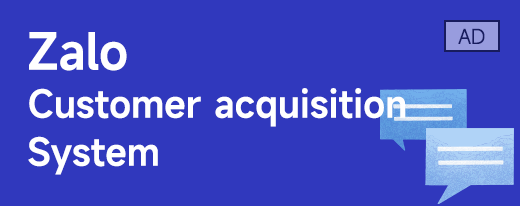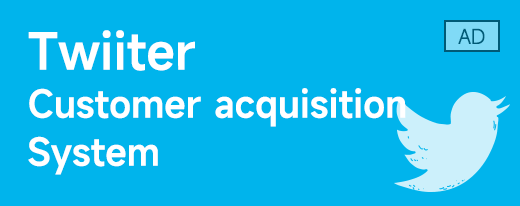Multi-dimensional data filtering plays an irreplaceable role in precision marketing. Especially when analyzing device types, multi-dimensional data filtering can help companies achieve a true adaptation of content and user environment. More and more social platform operators are beginning to realize that user behavior on different devices is significantly different:The activity cycle of Android users, the interaction frequency of iOS users, the reading habits of desktop users, and even the security risks of emulator users are all different. Without adjusting your strategy based on device type, even the best content may miss out on conversion opportunities because it’s incompatible, unaccustomed, or unsafe.
fromWhatsApp multi-terminal login to Telegram cross-platform interaction, from Facebook Messenger device tracking to Line user usage habits, each platform hides important clues related to "device type". And "using the right equipment to do the right thing" is the key to maximizing marketing efficiency.
How important is device type?
Many operators ignore equipment differences, resulting in the following problems:
lMessage format error: Pushing a link that can only be opened on the mobile side to the desktop cannot be opened.
lResponse delay: Desktop users may not have push enabled and the response is slow; mobile users are more responsive
lRisk of account suspension: Accounts using virtual machines and emulators are more likely to trigger risk control after being identified.
lPoor interactive experience: the video is too large and the image layout is incompatible, which directly leads to the loss of users
These are all due to the failure to carry out before delivery or interaction"Device type filtering". And once you use multi-dimensional data screening tools to integrate device models, system environments, and login habits, you can achieve a true "human-machine-content" trinity accurate match.
Differences in device types among mainstream social platforms
WhatsApp:
lMobile terminal (Mainly Android/iOS), high real-time performance
lDesktop (Windows/Mac) needs to be bound, often used in office scenarios
lThe web side has many restrictions and incomplete functions, making it suitable for passive reception.
lThe simulator side is common in marketing batch numbers and has higher risks.
Telegram:
lSupport multiple platforms to be online at the same time, fast data synchronization
lThere are many Android users, and a high proportion of overseas users
lPC users are mainly used for content subscription and community management.
lAPI accounts can be regarded as robot accounts and need to be processed separately
Facebook Messenger:
lThere are many Web users, and the operation is embedded in the browser.
lMobile users are mostly used for interactive replies and business communication.
lAPI calls contain certain device simulation components and need to be limited.
Line:
lJapan and Taiwan markets are dominated by mobile terminals
lDesktop users are mostly customer service/Operational use, higher compatibility
lSome old system devices have poor compatibility with new functions, affecting interaction efficiency.
In what specific operations can device type filtering be applied?
Content format matching
Limit video push toAndroid system (can be displayed in full screen), pushes file content to the desktop (for a better downloading experience).
For example:
lexistIn Telegram, send PDF information with a download button, only to Windows users
lexistSend vertical posters in WhatsApp and push them only to iOS devices to avoid abnormal display.
Customer Service Message Strategy
lMobile online users push phrase-based quick responses
lDesktop users provide more complete problem descriptions and operation guidance
lWhen the simulator recognizes the account, it will automatically block the conversation to avoid risk control.
Automated account maintenance and mass messaging platform optimization
lMark all simulator device accounts, assign low-frequency tasks, and prevent account bans
ldistinguishAPI device (Telegram Bot) and real users to avoid group sending errors
lPriority toAndroid devices push installation packages and scan code content to improve efficiency
Analysis of real application cases of social platforms
Case 1:Identifying emulator devices in WhatsApp account maintenance system
A cross-border e-commerce team is workingHundreds of automated accounts have been deployed on WhatsApp, but accounts are frequently blocked. Subsequent screening of device types revealed that 70% of frequently banned accounts came from simulator logins. After adjusting the strategy, only real mobile device online accounts are retained for interaction, the account suspension rate is reduced by 65%, and the average account life is extended to more than 21 days.
Case 2:System adaptation strategy in Telegram channel promotion
A dedicated teamThe Telegram content subscription team used the Digital Planet platform to screen out user groups with device types of "Windows" and push file packages and web version links to them; for Android users, it pushed interactive voting and lottery entries. The results showed that the click-through rate of information on different devices varied by as much as 3 times.
Case three:Differentiated content output in Line friend management
A Japanese brand inLine operates multiple social accounts. After filtering by device type, desktop users are classified into the "Working Hours Interaction Group", which mainly pushes product introductions from 1 to 5 pm; mobile users are classified into the "Fragmented Time Interaction Group", which mainly promotes flash sale activities and limited-time notifications. The click-through rate increased by 23%, and user retention increased by 12%.
Case four:Facebook auto-reply system branches based on device settings
A local service provider isFacebook Messenger deploys a chatbot that identifies user devices through API interfaces. For Web users, the service reservation link is pushed, and for mobile users, customers are given priority to make a call. An analysis report shows that the web link click rate is 35%, while the mobile call rate is 48%.
How else can you play a multi-dimensional strategy that combines equipment types?
Device type is a filtering criterion in itself, but its greatest value comes in combination with other dimensions:
lDevice type+ Online status: Mobile online users are suitable for receiving real-time interactive content
lDevice type+ Registration time: Newly registered users of the simulator have a high probability of having their accounts banned, so they should be used with caution.
lDevice type+ Activity: Active users on the desktop are often long-term customers and can be maintained with focus
With these combined strategies, one can build aA truly structured and automatically operated private domain ecosystem, rather than a bunch of unidentifiable phone numbers orID.
How to quickly master the device type filtering tool?
Although most social platforms will not directly open"Device Type" field, but professional tools like Digital Planet provide support for:
lAutomatically identify account login terminal (mobile/desktop/emulators)
lmarkAPI account, abnormal device behavior account
lDevice dimension fields can be exported and combined with other tags for layering
landWhatsApp/Telegram group messaging platform seamlessly connects and automatically sets message templates based on the device
At the same time, the system supports device behavior change reminders, for example: a user isSwitching from "mobile terminal" to "desktop terminal" can trigger the system to update user labels and switch operating strategies.
To promote accurately, you must first look at the details of the equipment.
Today, as the number of users is increasing, your delivery does not necessarily require"Wider", but "more accurate". Device type filtering is the most technically valuable part of multi-dimensional data filtering. It does not rely on the user's active behavior, but determines the user's real usage environment based on system signals and device habits.
Become a digital planet nowVIP users can enjoy multiple functions such as device type identification, emulator number checking, multi-platform behavior modeling, and automatic matching of content templates. They can gain precise insight into the behavioral logic behind each device and improve your promotion efficiency and security.
digital planetis a world-leading number screening platform that combinesGlobal mobile phone number segment selection, number generation, deduplication, comparison and other functions. It supports customers worldwideBatch numbers for 236 countriesScreening and testing services, currently supports40+ social and apps like:
The platform has several features includingOpen filtering, active filtering, interactive filtering, gender filtering, avatar filtering, age filtering, online filtering, precise filtering, duration filtering, power-on filtering, empty number filtering, mobile phone device filteringwait.
Platform providesSelf-screening mode, generation screening mode, fine screening mode and customized mode, to meet the needs of different users.
Its advantage lies in integrating major social networking and applications around the world, providing one-stop, real-time and efficient number screening services to help you achieve global digital development.
You can find it on the official channelt.me/xingqiuproGet more information and verify the identity of business personnel through the official website. official businesstelegram:@xq966
(Warm reminder: When searching for the official customer service number on Telegram, be sure to look for the username.xq966), you can also verify it through the official website personnel:https://www.xingqiu.pro/check.html, confirm whether the business contact you is a planet official
数҈字҈星҈球҈͏











